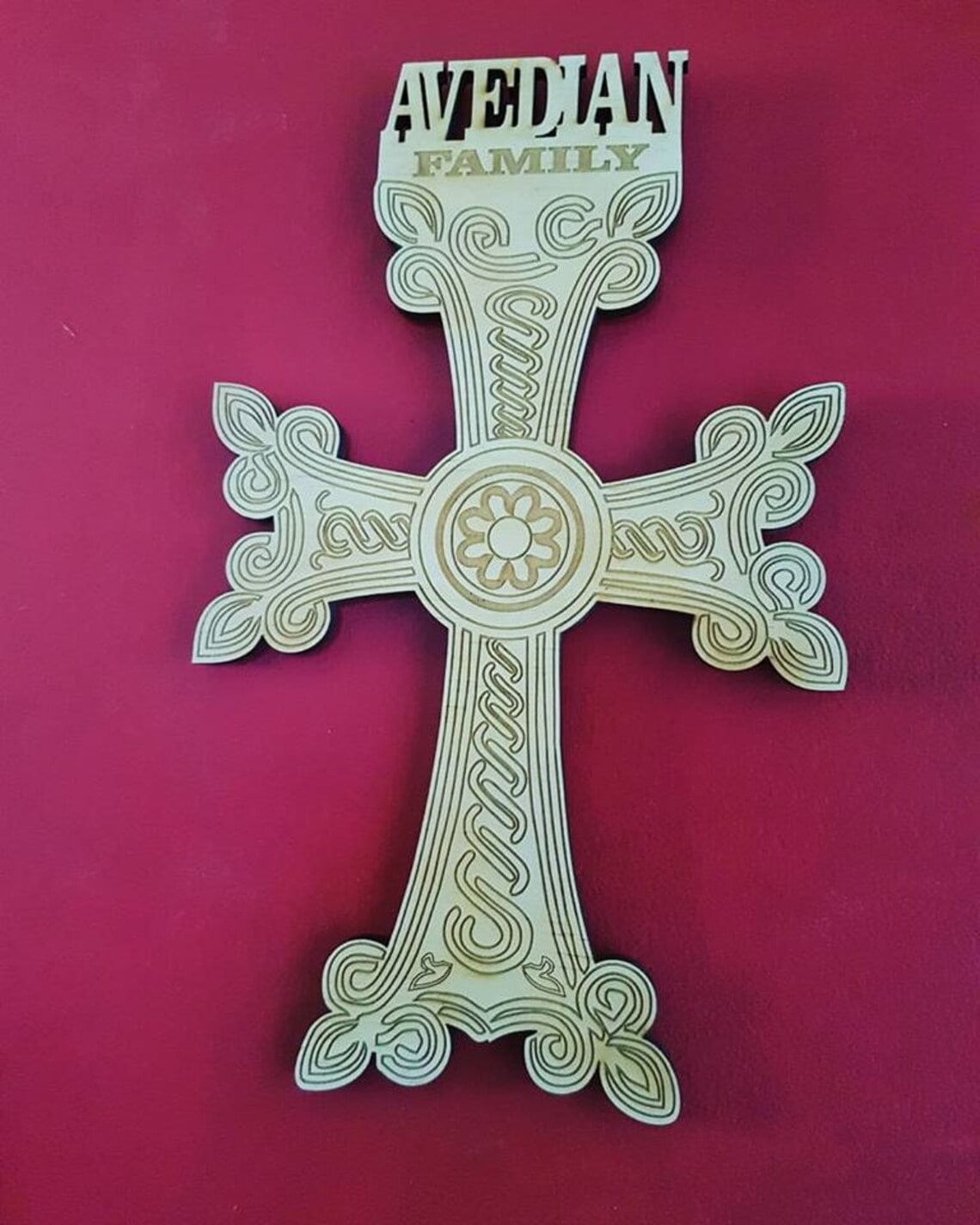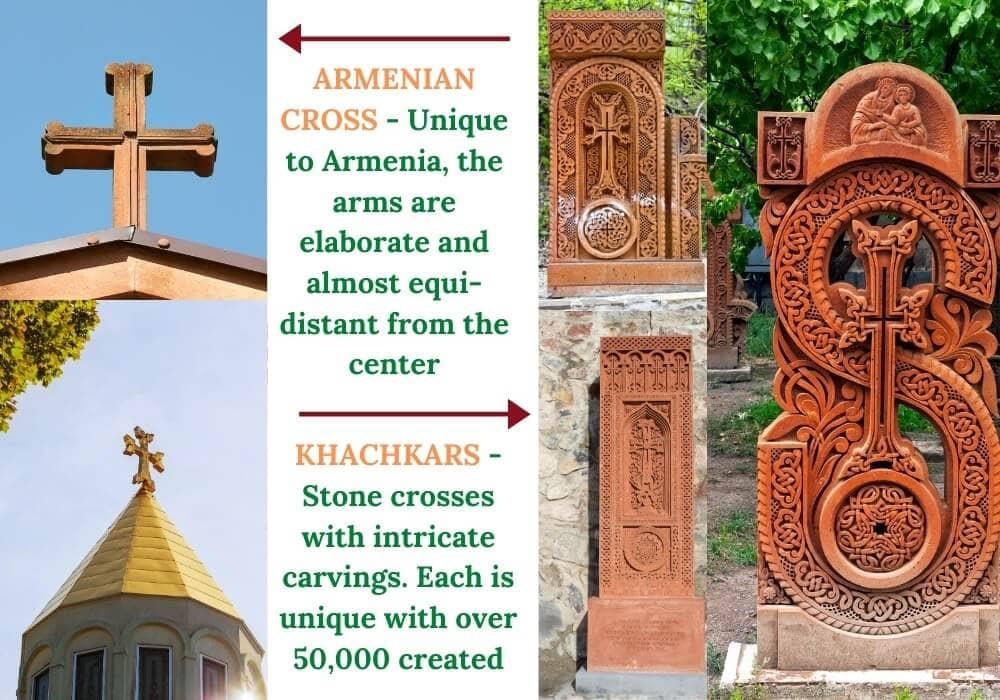
Table of Contents
Armenian crosses are known for their elaborate motifs and unique designs. Often carved in stone monuments, the Armenian cross is a variant of the Christian cross with stylized floret elements, making it a unique art of spiritual expression. They’re a representation of Armenia’s

History of the Armenian Cross (Khachkar)
At the beginning of 4th century, Armenians recognized Christianity as their state religion, becoming the first country to do so — and started destroying pagan monuments, replacing them with wooden crosses as the symbol of their faith. Over time, they replaced these with stone crosses called as khachkars, which serve as memorial stones, relics, focal point of worship, and even commemorative shrines.
As a nation, Armenians take the cross very personally, therefore the symbol became known as the Armenian cross. It is often decorated with knot-like ornaments forming geometric shapes, which symbolize eternity. When carved on stones, it is richly decorated with lace patterns, botanical motifs, geometric elements, carvings of saints, and even images of national symbols. These are somewhat similar to the elaborate swirls and spirals of Celtic knots.
There are about 50,000 khachkars, each of which has its own pattern and no two are alike. In 2010, the Armenian cross stone art was inscribed on the UNESCO’s Representative List of the Intangible Cultural Heritage of Humanity. However, in recent history, many khachkars have been destroyed by invaders. Considering that each khachkar is unique, this is a sad loss.

Symbolic Meaning of the Armenian Cross
The main idea of the Armenian cross is always associated with Christianity.
- A Symbol of Protection – While the depiction of Armenian crosses on khachkars became an influential way of spreading Christianity, it was also believed that the cross-stones would cure diseases and protect them from evil.
- A Symbol of Christianity – Armenians started making khachkars after the adoption of Christianity in 301 AD as a form of religious expression. Throughout history, influence of Christianity is seen on art, architecture and landscape on Armenia.
- A Symbol of Life and Salvation – For Armenians, the cross is the instrument on which Jesus sacrificed himself in order to save mankind of its sins. Therefore, it’s a symbol that shows the power of life over death.

Armenian Cross Uses Today
The art of carving crosses on the rock continues where Armenian stonecutters create unique masterpieces that will likely have cultural and historical importance after many centuries. Nowadays, Armenian crosses can be seen not only on stones, but also on church buildings, monasteries, cemeteries, bridges, towers, fortresses, homes, gardens, and forest in Armenia.
In jewelry design, Armenian crosses are often designed with botanical motifs and geometric elements. Some elaborate designs are studded with diamonds, colorful gemstones, intricate patterns, as well as depicted with other symbols such as the triquetra, wheel of eternity, six-pointed star, and tree of life.
In Brief
The Armenian cross is one of the most recognizable symbols of Armenia, reflecting the religious and historical significance of Christianity to Armenian people. It continues to be popular in use in architecture, jewelry, fashion and decorative items as a symbol of Christianity and Armenian heritage.








